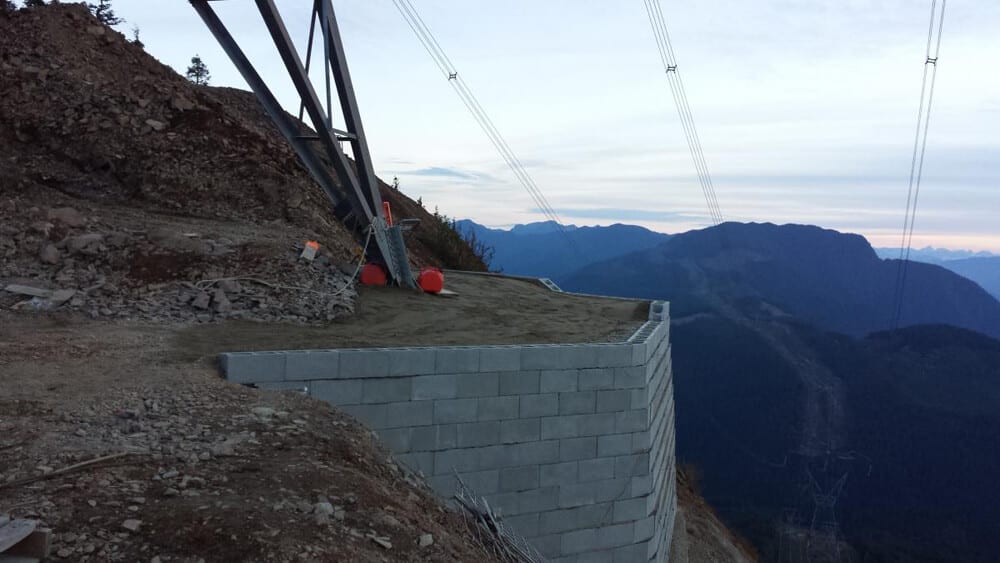
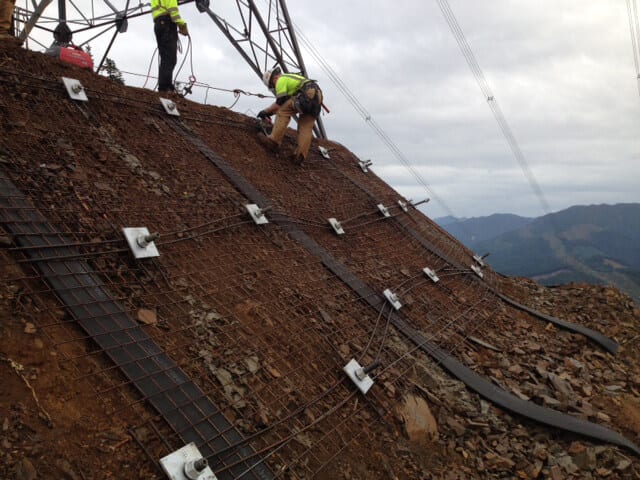
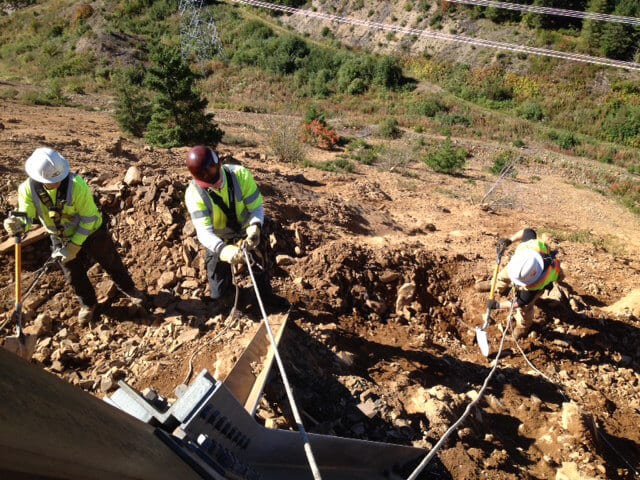
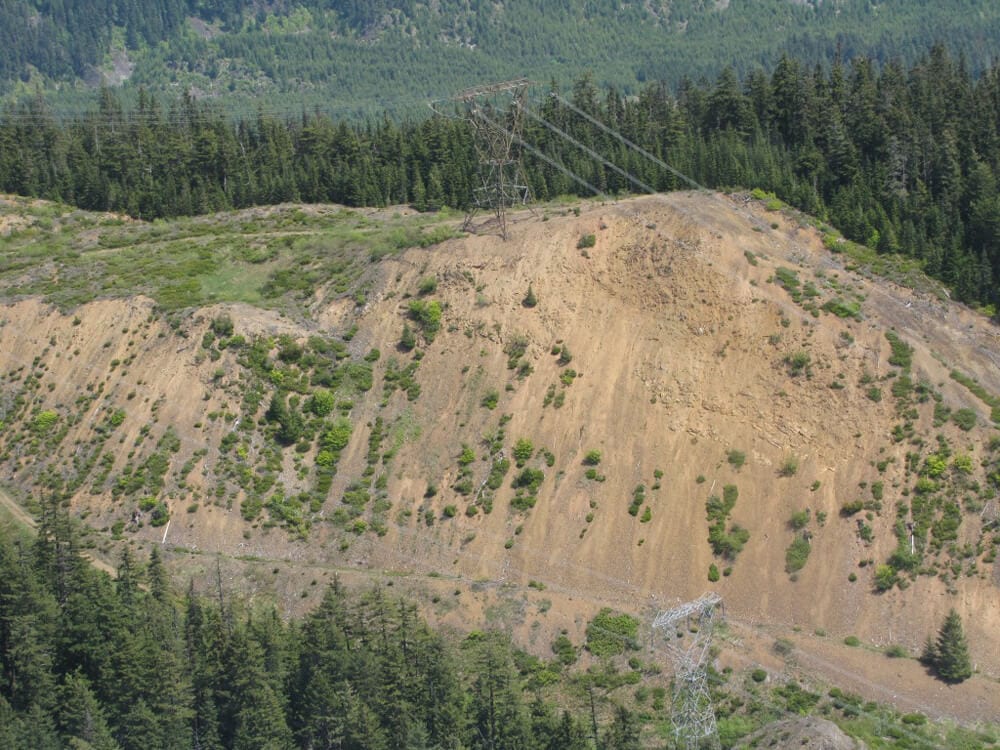
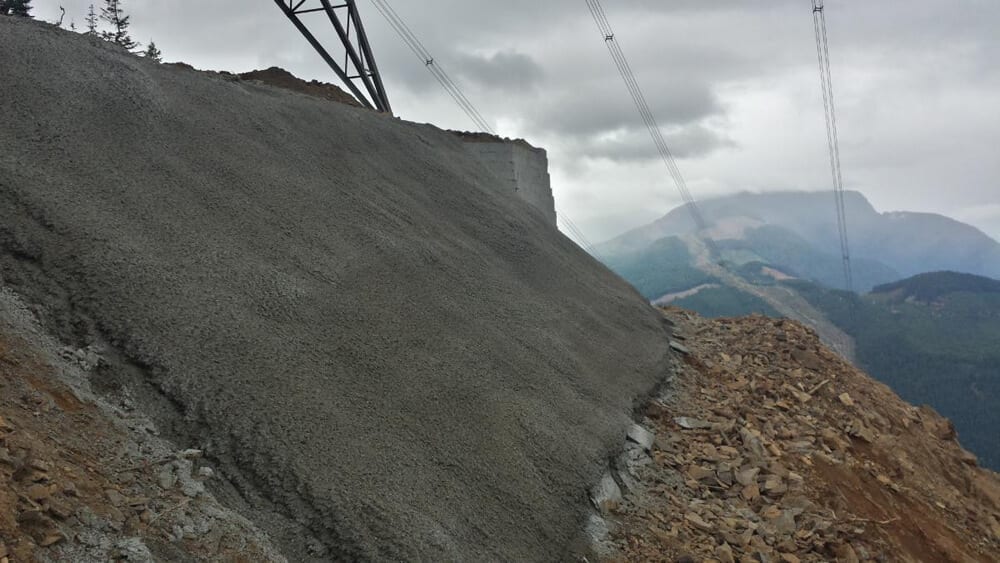





The foundation of a high voltage tower situated at the crest of a steep, high ridge of weak rock in Southern British Columbia was at risk of being undermined and needed slope stabilization. Through the decades since its construction, the rise had eroded several meters. The weak nature of its sedimentary rock made it even more erodible than soil. Relentless frost, wind, and weather had broken and raveled several meters of the slope’s crest. This material loss exposed the upper portion of the foundation grillage and removed the required soil mass needed for uplift resistance. Clearly, the transmission tower’s owner needed to act quickly by either moving the tower back, protecting the crest, and/or underpinning the foundation.
Line clearance restrictions and topography prevented a tower move, but the physical constraints of limited access and a high slope made foundation protection equally challenging. GeoStabilization International®, a soil nail wall contractor and underpinning specialist, utilized its innovative limited-access equipment and ability to seamlessly adjust the design throughout construction to provide the slope stabilization solution.
As with many of GeoStabilization’s engineered soil repairs, the technical aspects were only a part of the equation. Collaboration with First Nations, environmental sensitivities with the Mountain Beaver (Canada’s most endangered species), steep off-road access, and a fast-approaching winter further complicated the work.
Weaving through all the intricacies, the result was a work of art.Perched at the top of a mountain ridge, the final design involved a matrix of micropiles, tieback anchors, grout injection, shotcrete, and one of their soil stabilization innovations, the innovative Geosynthetically Confined Soil® (GCS®) wall as a retaining wall buildout. Working on top of the ridge’s crest, the crews began drilling the soil nails horizontally into the slope around the existing foundation to act as tiebacks and stabilize its front face. Grout was injected into the rock fractures to fill existing voids and further support the underpinning foundation. A steel-reinforcing element was then secured to the soil anchors before shotcrete was applied to the face. Once complete, micropiles were installed vertically into the slope to provide a solid base for the retaining wall. Then, the crews built the GCS® retaining wall atop the micropiles to prevent further erosion around the transmission tower’s foundations.
Mechanically Stabilized Earth (MSE) walls and GCS® walls share many of the same characteristics, including:
The MSE wall structure consists of layers of alternating compacted backfill and soil reinforcement fixed to the wall facing. The wall’s stability results from the tension between the backfill and soil nail reinforcements, which creates a flexible construct that withstands significantly heavy loads. An MSE wall relies on the reinforcement mechanism, using grids that act as tiebacks.
In comparison, a GCS® wall differs from an MSE wall because its reinforcement materials confine the soil rather than interact with the facing and supporting elements. GCS® walls use closely spaced reinforcement material that provides uniform soil confinement throughout each layer. Adequate compaction is vital to prevent GCS® walls from failing.
If you happen to be on a flight between Vancouver and Calgary, keep an eye open for it!
For over twenty years, our teams have been mitigating landslides and providing residential slope stabilization, slope monitoring, slope protection, and landslide prevention services. Contact GeoStabilization International® at 855-579-0536 to learn how to utilize our geohazard mitigation services for your geotechnical application.
If you are interested in a no-obligation site visit to determine if our services fit your geohazard mitigation needs, call us at 855-579-0536 or fill out our contact form.